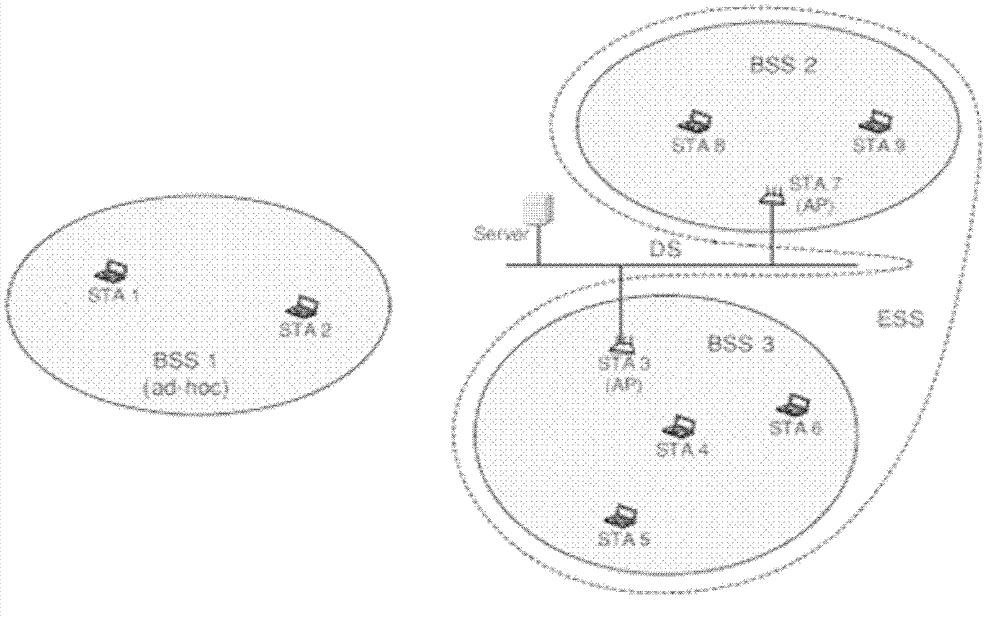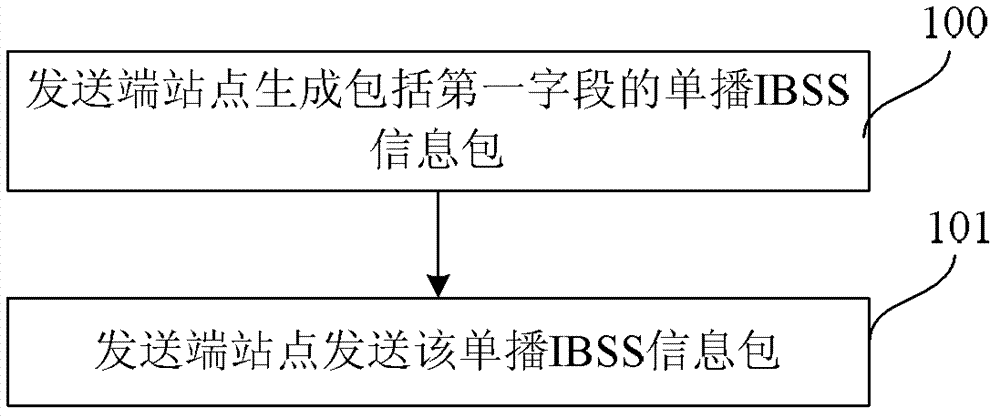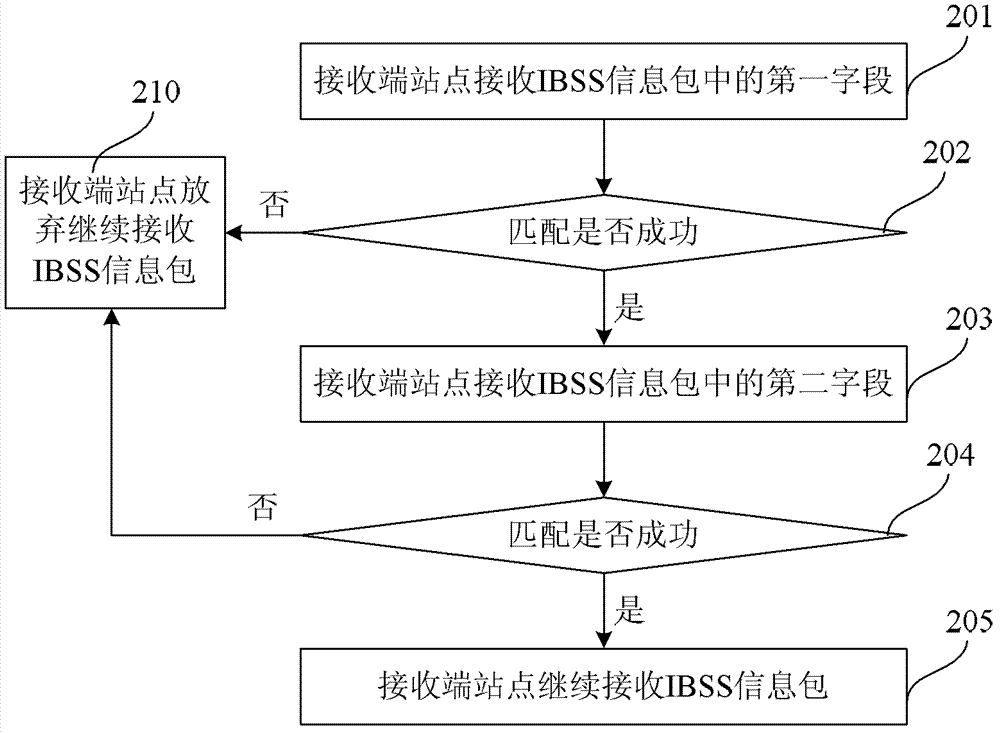Method and device of sending and receiving information packet of independent basic service set (IBSS) system
A technology of receiving method and sending method, which is applied in connection management, wireless communication, energy-saving ICT, etc., can solve the problems of large amount of information processing, increased processing cost, and large power consumption of IBSS sites, so as to reduce the processing process and save processing time , The effect of reducing power consumption
- Summary
- Abstract
- Description
- Claims
- Application Information
AI Technical Summary
Problems solved by technology
Method used
Image
Examples
Embodiment Construction
[0031] The technical solutions of the present invention will be described in further detail below with reference to the accompanying drawings and embodiments.
[0032] The method and device for receiving information packets in the IBSS system of the embodiment of the present invention is to improve the VHT-SIG-A field in the existing 802.11ac information packet, and insert part of the address information, so that the information can be received at the receiving end Pre-judgment before package.
[0033] figure 2 It is the flow chart of the sending method of information packet in the IBSS system of the embodiment of the present invention, as shown in the figure, the present embodiment comprises the following steps:
[0034] Step 100, the station at the sending end generates a unicast IBSS packet including a first field, where the first field includes the first part of address information of the receiving end;
[0035] Because the communication between the sending end station ...
PUM
 Login to View More
Login to View More Abstract
Description
Claims
Application Information
 Login to View More
Login to View More - R&D
- Intellectual Property
- Life Sciences
- Materials
- Tech Scout
- Unparalleled Data Quality
- Higher Quality Content
- 60% Fewer Hallucinations
Browse by: Latest US Patents, China's latest patents, Technical Efficacy Thesaurus, Application Domain, Technology Topic, Popular Technical Reports.
© 2025 PatSnap. All rights reserved.Legal|Privacy policy|Modern Slavery Act Transparency Statement|Sitemap|About US| Contact US: help@patsnap.com



